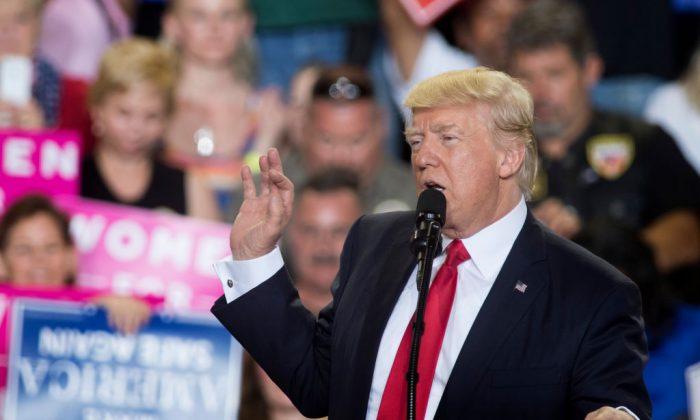There was no federal income tax before the introduction of the Revenue Act of 1913. Since then, taxes and tax laws have grown in number and become ever more complicated. Although President Donald Trump is trying to fix this situation, even his plan is still complicated.
Trump has campaigned on a pro-growth, “America First” platform. The new White House tax proposal, though different from the tax reforms indicated during the campaign, still supports these goals.
One of its cornerstones is the reduction of the top corporate tax rate from 35 percent to 15 percent, while eliminating many corporate deductions. The goal is to simplify the corporate tax code and to make American corporate taxes internationally competitive.
Large corporations will also receive a boon, with foreign-earned income taxed at a “competitive” (though as yet unspecified) rate when repatriated. Currently, the tax rate for foreign income is 35 percent, leading multinationals to keep their funds offshore. A border adjustment tax for imports was discussed after Trump took office, but has been left out of the current proposal.
The income of small businesses, however, will continue to be taxed according to personal income tax rates, which may be as high as 35 percent.
“This plan does not close the loopholes that encourage corporations to send jobs and profits overseas. Those loopholes are a top concern for small-business owners, who simply can’t compete with America’s biggest and most profitable corporations,” stated Amanda Ballantyne, national director of The Main Street Alliance, in a press release.
For individuals, however, there will be a simplification and broad decrease in tax rates. According to Fox News, the current seven brackets will be collapsed into three, to 15 percent, 25 percent, and 35 percent. The income thresholds have not yet been announced. This will be a reduction from the current top rate on high earners, 39.6 percent.
Rates on capital gains, dividend, and interest income are all going to be lower, although not by huge amounts. The biggest difference for individuals will be the doubling of the standard deduction or tax-free amount from $12,600 for couples to $24,000.
Will It Work?
Tax cuts for individuals and businesses are good for economic growth but aren’t the only determining factors for creating more output and more jobs in the United States. The treatment on foreign earnings still favors outsourcing, and the lack of relief for small businesses detracts from the policy’s main objectives.
The White House proposal is likely to add to the national deficit over 10 years.
“The plan could cost $3 trillion to $7 trillion over a decade–our base-case estimate is $5.5 trillion in revenue loss over a decade. Without adequate offsets, tax reform could drive up the federal debt,” stated the Committee for a Responsible Federal Budget, in an April 26 blog post.
Of course, much depends on the underlying assumptions. The White House assumes there will be a 3 percent average growth rate over the next 10 years, much higher than the 1.8 percent the Congressional Budget Office assumes. According to calculations by Goldman Sachs, this could reduce the cost of the cuts by $3.7 trillion over the next decade.
Politics
Making the budget “revenue neutral” will be a matter of intense negotiation with the House and Senate Republicans who are needed to support the bill.
For example, supporting the elimination of the state tax deduction from individual federal tax bills would be political suicide for 39 Republican representatives from the four high-tax states of California, Illinois, New Jersey, and New York. Most likely, they will have that provision removed.
After the president submits a formal budget later in May, Congress will have to dispose of the Affordable Care Act (ACA) before moving to draft a fiscal 2018 budget.
With the ACA out of the way, Congress will release the first official drafts of tax legislation as early as July. After that, Republicans can use the process of “reconciliation” to reduce to 51 the number of votes necessary to pass legislation.
Under this process, the tax cuts would have to become revenue neutral after 10 years, at which time they will be reassessed. Such it was with the 2001 Bush tax cuts, when President Barack Obama signed a bill to extend most of them in 2010.
Despite the potential to expedite the process via reconciliation in Congress, Goldman Sachs is not holding its breath for Trump to sign a bill into law anytime soon. “We expect a long road ahead for tax legislation,” the investment bank stated in a note to clients on April 26.






Friends Read Free